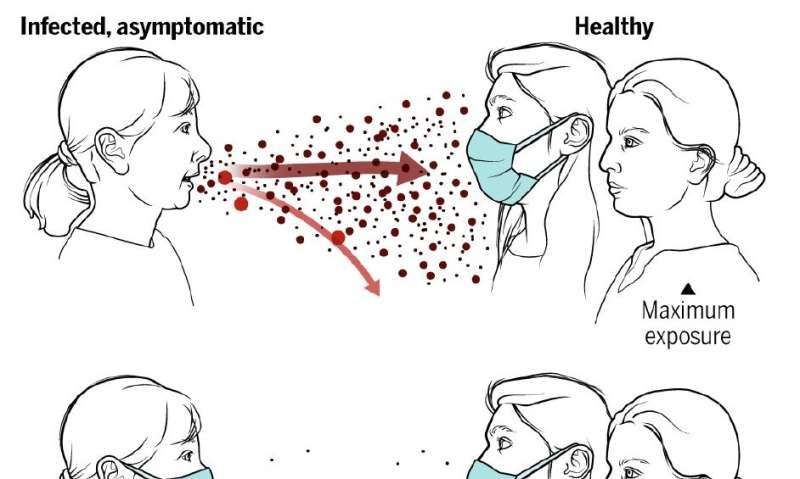As businesses reopen, it's crucial we wear masks, safely distance

In a perspective piece published today in the journal Science, UC San Diego experts describe in detail the growing evidence that SARS-CoV-2, the novel coronavirus that causes COVID-19, can be spread by asymptomatic people via aerosols—a reality that deeply underscores the ongoing importance of regular widespread testing, wearing masks and physical distancing to reduce the spread of the virus.
The highlights of the perspective:
Asymptomatic people spread virus in aerosols. Mounting evidence suggests that SARS-CoV-2 is silently spread in aerosols exhaled by contagious infected persons displaying no symptoms. A recent study estimated that a single minute of loud speaking might generate between 1,000-100,000 virion-containing aerosols or virus particles suspended in the air. Due to their small size, aerosols can remain airborne for hours and travel long distances. Small, virus-containing aerosols can also penetrate more deeply into the lungs, bypassing the immune system, which can lead to more severe cases of COVID-19.
Traditional measures target droplets, not buoyant aerosols. Traditional respiratory disease controls based on physical spacing are designed to reduce transmission from large droplets produced in the sneezes and coughs of infected individuals. However, a large fraction of the spread of COVID-19 appears to be occurring through airborne transmission of smaller aerosols produced by infected but asymptomatic individuals during breathing and speaking. Droplets settle to surfaces within six feet and spread via contact. Contrarily, infectious aerosols can accumulate in indoor, uncirculating air for hours, where they can be more easily inhaled deeply into the lungs.
Infectious aerosols can travel further than six feet. Given how little is known about the airborne behavior of infectious aerosols, it's difficult to define a safe distance for physical distancing. However, a six-foot perimeter indoors without a mask is likely not enough if an asymptomatic person is actively shedding the virus, researchers say. A good comparison is exhaled smoke: The distance from a smoker at which you can smell smoke indicates the distance at which you might also inhale infectious aerosols. Many factors affect aerosol spread indoors and outdoors, such as air flow and ventilation, number of people in the space, time of exposure , sunlight, temperature and humidity.
Masks are essential. Properly fitted masks provide a critical physical barrier, reducing the number of infectious viruses in the exhaled breath of asymptomatic individuals. Countries that have been most effective in limiting the spread of COVID-19 have implemented universal masking. For example, Taiwan (population 24 million), where masking orders were universal and quickly enacted, did not implement a lockdown during the pandemic; yet it maintained a low incidence of approximately 441 cases and 7 deaths. By contrast, New York State (population 20 million) has had more than 353,000 COVID-19 cases and 24,000 deaths.
More information: Science (2020). DOI: 10.1126/science.abc6197



















